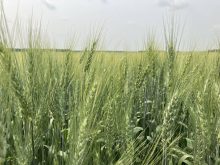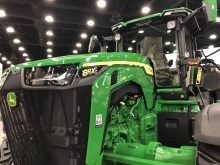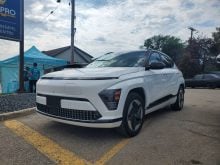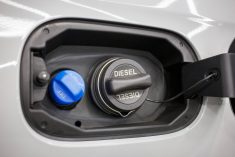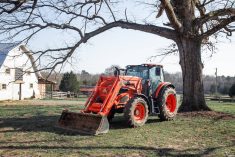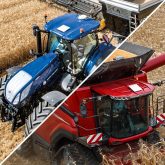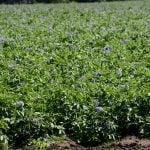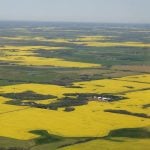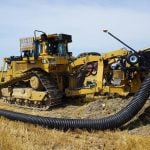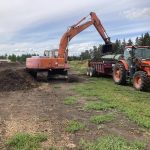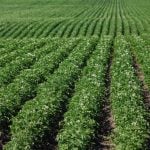John Deere used the Commodity Classic farm show last month in Denver as the venue to pull the wraps off a number of upgrades to its combine and sprayer lineups.
“For 2026 we’re advancing our automation features on our combines,” says Bergen Nelson, go-to-market manager for harvesting equipment at John Deere. “Model year ’25 was a big year for both X9 and S Series, introducing ground speed automation and harvest setting automation.”
The new capabilities add to what those automated systems initially offered.
Read Also
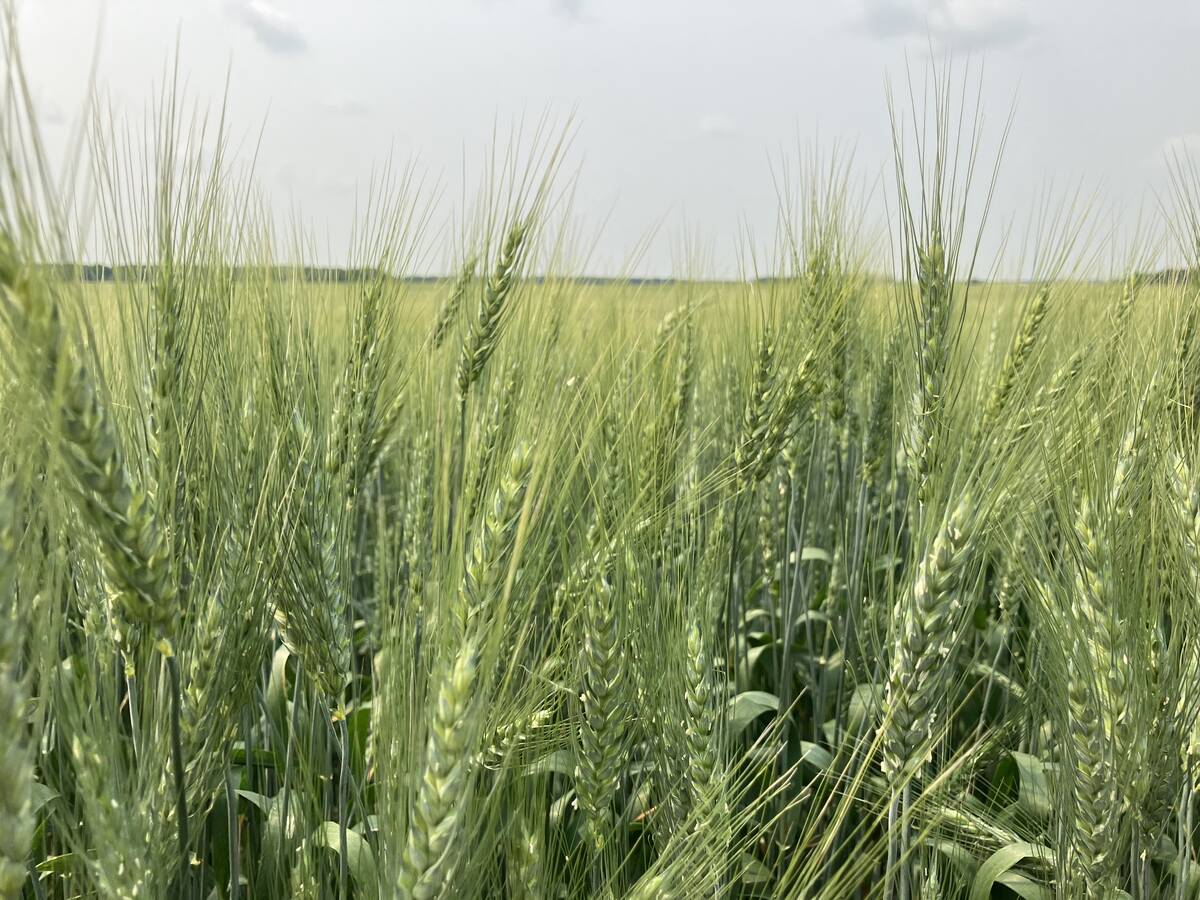
Swather-sprayer retrofit a clever solution to winter wheat’s tight planting window
A system to spray pre-seed herbicide at the same time as swathing isn’t just a clever labour-saver, but could help overcome one of the biggest obstacles keeping Prairie farmers out of winter wheat: the timing.
Predictive ground speed automation, included in the brand’s Ultimate Technology package, uses information from cameras and predictive yield maps based on satellite views from the John Deere Operations Centre to optimize the combine’s ground speed.
To that automation, the 2026 combines add a new weed detection feature.
“Cameras on the front of the combine can now see the weed pressure in the field and the combine will speed up or slow down based on that,” Nelson says. “We know if we approach a weedy patch in the field, we need to slow down. In addition, the system will give a weed pressure map in the John Deere Operations Centre.”
Although these features are being launched for 2026, they can be added to a model year ’25 machine that includes the Ultimate package with cameras.
“They’ll need the Ultimate combine license, which will include predictive ground speed automation, harvest settings automation and all the G5 advanced features we have available today,” Nelson says.
A new feature for the harvest automation system is the out-of-crop adjustment. When the combine reaches a headland, or some other area of the field where there is no crop coming into it, the chaffer, sieve and fan speed will adjust to avoid blowing grain out the back of the machine.
Machine Sync, which allows a combine operator to control a grain cart during unloading, gets an update also.
“Now with combine auto unload, we’re putting a camera on the unloading auger,” Nelson says.”The camera will be calibrated to the grain cart and automatically move it forward or backward, eliminating that step from the combine operator.”
Up front, there are new header options.
“We have a huge update to the front-end equipment, which is really geared toward the western producer,” Nelson says. “Our three-piece reel is new for 2026, building on the foundation of our HDF and HDR heads. They’ll be compatible with the three-piece reel.
“The three-piece reel really gives us the ability to maintain a consistent cutter bar-to-reel relationship as the wings flex. In the past, as the wings would flex you’d have a gap in the centre section. Now that’s eliminated.”
The three-piece reel also has additional tines, leaving only four inches between each one. That equates to 32 per cent more tines across the head, allowing it to better pull in crop. The new reel is retrofittable to any of Deere’s HDF, HDR or RDF headers.

Sprayers
Sprayers get some technology upgrades as well.
See and Spray Select, which has been available for spot-spraying weeds in fallow fields, gets expanded capabilities for model year ’26. It can now also be used to apply variable-rate chemicals in late-season fungicide, desiccant and pre-harvest passes through the crop.
Growers can see the percentage of biomass each camera detects throughout the field. Each camera rates the amount of green biomass detected and varies the volume of product applied by percentage. An operator can then adjust how much product to apply on an individual nozzle-level basis.
Variable rate capabilities will require a G5 or G5 Plus CommandCenter display.
“See and Spray Select has primarily been used for fallow applications for green weeds against brown or black soils,” says Deere’s go-to-market manager for application products, Josh Ladd. “New for this year, however, we introduced variable rate for later season fungicide, desiccation, PGR-type products, where the operator can set the band of application and the target application rate.
“Using the cameras and processors, the machine will automatically adjust the rate of application to ensure we’re putting the right amount of product down across every acre of every field.
“With later-season passes, with a lot of the Canadian producers we’ve spoken with, the general sentiment has been we’re going to spray at our target rate, but we know for certain on some acres we may need more or less. For a while, there’s never really been an option, unless they’re running off a prescription map. Now with See and Spray Select, we’re able to do that in real time.”
The brand also announced it will expand its turn automation feature to sprayers.
AutoTrac Turn Automation will be available for 2026 sprayers in both the Deere and Hagie brands. It helps ensure consistent and accurate turns at the end of each pass, taking some of the pressure off operators and allowing them to focus on watching boom positions and obstacles. It also reduces crop trampling.
“A lot of our customers have likely experienced this capability on some of our other Deere products,” Ladd says. “We also introduced AutoTrac Vision 2.0. It’s a new system for model year ’26 John Deere sprayers. It uses a stereo and mono camera in combination to keep the sprayer pinpoint-precise on the row up to 22 m.p.h. to limit crop damage.”
AutoTrac Vision 2.0 can detect crop heights as short as four inches and late-season canopy coverage up to 90 per cent, allowing it to function accurately throughout the growing season and keep wheels positioned in the tracks or between rows.
“A lot of those features will come standard on model year ’26 sprayers from the factory.”
A new precision upgrade kit for See and Spray Select is available for Deere sprayers going back to the 2018 model year.

Rate controller
Deere also used the Denver show to announce the release of its new Rate Controller 3. It has an option to control two liquid and/or anhydrous ammonia (NH3) products for up to 16 sections. It replaces the GreenStar controller the brand has been offering.
“Now customers can have a rate controller app that is easy to set up,” says Christopher Murray, technology marketer for John Deere. “Canadian growers can not only use this on John Deere equipment, like a planter or seeder, but on third-party tools as well.”




